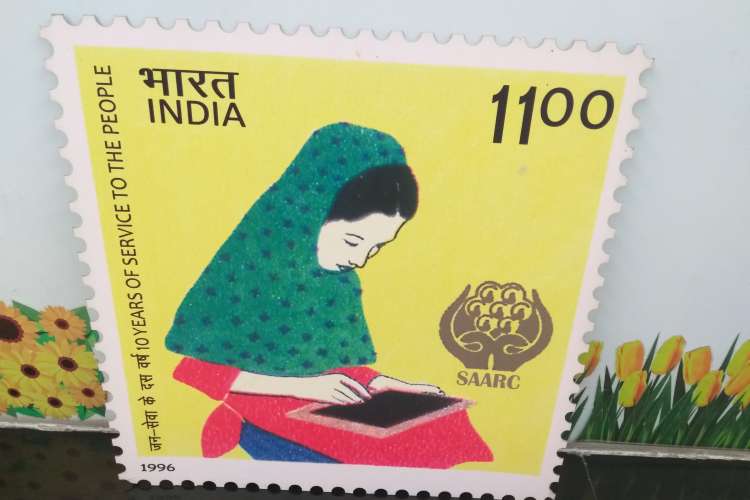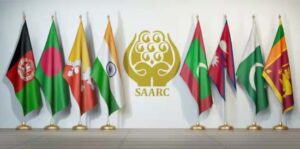
China and Pakistan are reportedly trying to create a new regional bloc that can be an alternative to the increasingly dysfunctional South Asian Association for Regional Cooperation (SAARC). India is likely to be excluded from the initiative.
In a meeting held in Kunming on June 19, China, Pakistan, and Bangladesh apparently discussed the possibility of forming the new regional bloc to focus on economic integration, infrastructure development and regional connectivity.

India’s determination to isolate Pakistan and not engage with it has negatively impacted South Asian regionalism and the regional associations built around it, namely SAARC and South Asian Free Trade Association (SAFTA).
Can the SAARC gap be filled by China? And would doing so serve China’s strategic goals in the region?
SAARC has not held a formal summit since 2014, in keeping with India’s position of no engagement with Pakistan, a state it accuses of supporting terrorism.
India’s focus instead has been on strong bilateralism with its South Asian neighbours. So far, China has done the same by significantly building strong relations with South Asian countries.
READ I BRICS economic goals clash with India’s Quad strategy
Pakistan-China ‘all weather’ ties
China’s favourite South Asian nation by far is Pakistan, with whom they have an ‘all weather’ relationship.
Pakistan’s geopolitical dalliance with the US and its willingness to play proxy to US interests, however, stops short of its loyalty to China.
Even as India and China seek to improve their relations and deepen trade ties, the Sino-Pak relationship is a red light for India.
Pakistan’s perceived role in sponsoring terrorism against it deters India from building regional cooperation as it pressures its regional allies to shun Pakistan.
The smaller South Asia nations, however, have their own way of hedging and leveraging regional powers, and each has its own agenda.
Bangladesh courts China
Bangladesh’s relations with India took a nosedive after the recent regime change when India’s known favourite Prime Minister Sheikh Hasina was ousted by a populist student led movement. It brought economist-technocrat Mohammad Yunus as interim head of government and Hasina took political asylum in India.
Yunus is systematically improving relations with Pakistan which had adversarial relations with Bangladesh ever since the painful and bloody independence from Pakistan in 1971, which India facilitated with a significant military role.
Moreover, Yunus also seeks to strengthen Bangladesh’s relations with China. Unlike with India, Bangladesh’s relations with China remain not just unchanged but deepening after the ouster of Hasina.
China already supplies 72 percent of Bangladesh military equipment. Now, Bangladesh’s ‘Forces Goal 2030’ can boost Chinese arms imports to a new level.
The difference is that while the Hasina Government took care of Indian sensitivities, Yunus has no such interest. Chinese ambassador to Bangladesh Yao Wen said that the changed regime in Dhaka has not set back China’s commitment to develop ties with Bangladesh.
Nepal’s equidistance
Nepal, which houses the SAARC Secretariate, hedges its foreign policy in regional geopolitics. Sandwiched between India and China, Nepal has a deep dependence on India for trade and transit but it also wants China’s development assistance.
Nepal benefits from India’s open-door (visa-less) entry for Nepali citizens. However, India also has the capability to arm-twist Nepal and has blockaded it in 1989 as well as 2015 and intervening not so subtly in its domestic politics.
Nepal has, however, learnt to balance between India and China. Nepal is a participant in China’s Belt and Road initiative but it also has development compacts with India. Nepal clearly favours non-alignment and non-entanglement, keeping away from the Sino-Indian rivalry.
Uneasy Bhutan and the Maldives
Bhutan remains uneasy about China’s declared claims for Bhutanese territory on the Doklam Plateau. The Tibet Autonomous Region of China has a 470-kilometer border with Bhutan.
India on its part has pressured Bhutan on occasion withdrawing subsidies on gas and kerosene (Bhutan is dependent on India for these) and imposing its goods and services tax on Bhutanese imports into India. These steps make Bhutan cautious about both India and China as the Bhutanese are sensitive about their identity and sovereignty.
The Maldives has got into a debt-trap with China to the tune of US$ 3.2 billion. However, it also seeks and receives Chinese development and infrastructure assistance. Now, Maldives is also trying to navigate stronger ties with India.
Sri Lanka’s balancing game
Sri Lanka has also sought to balance between India and China.
It was an early reformer into neoliberal economic restructuring but started facing unprecedented political and economic crises since 2022 — due to a combination of factors that include the impact of Covid-19 on tourism, the Ukraine conflict, its earlier civil war with its Tamil minority, political corruption and international debt.
This forced Sri Lanka to seek IMF loans 16 times. Nearly 80 percent of Sri Lankan debt is from International Sovereign Bonds — not China. Moreover, the US has an interest in Sri Lanka as a strategic marine base.
China plays up to Afghanistan
China has sought to mediate to smoothen the turbulent relations between Afghanistan and Pakistan but has not met with much success. However, it does have an economic relationship with the Taliban government in Afghanistan since it envisages expanding the China-Pakistan Economic Corridor (CPEC) northwards to Afghanistan and then the Central Asian Republics. At the same time, China has concerns about Taliban’s links with radical Islamic groups especially the Uighurs present in Afghanistan.
With these geopolitical tugs and pulls between regional powers would China manage to build a SAARC-like organisation?
The prospect seems quite unlikely.
China is interested in advancing its trade and exercising economic leverage. Getting into any new formal regional organisation that competes with India pushed SAARC — even if it is defunct does not serve its purpose currently.
India and SAARC
As far as India and SAARC is concerned, India needs to revive a regional body. If not SAARC, then SAFTA. While India is plagued by the terror issue allegedly emanating from Pakistan, it cannot allow regionalism trade and related issues to be held hostage on account of the zero-sum game with Pakistan.
Moreover, putting pressure on smaller neighbours gives India the reputation of a regional bully — something that India implies about China of. India itself does not like the biggest bully, the US, pressuring South Asian countries, including India. It makes no sense for India, therefore, to do precisely what it criticises in others.
Clearly, most of the small regional states would like a regional organisation to vent their views. After all, most other regions have a working regional organisation that gives them collective heft, like ASEAN, the African Union, the Economic Commission for Latin America and so on.
At the same time, the smaller nations of South Asia neighbouring India and China would be unlikely to join a regional organisation that would alienate either of them. Both India and China understand that.
Anuradha Chenoy is Adjunct Professor, O P Jindal Global University, Sonipat, Haryana, India. Originally published under Creative Commons by 360info .
.
